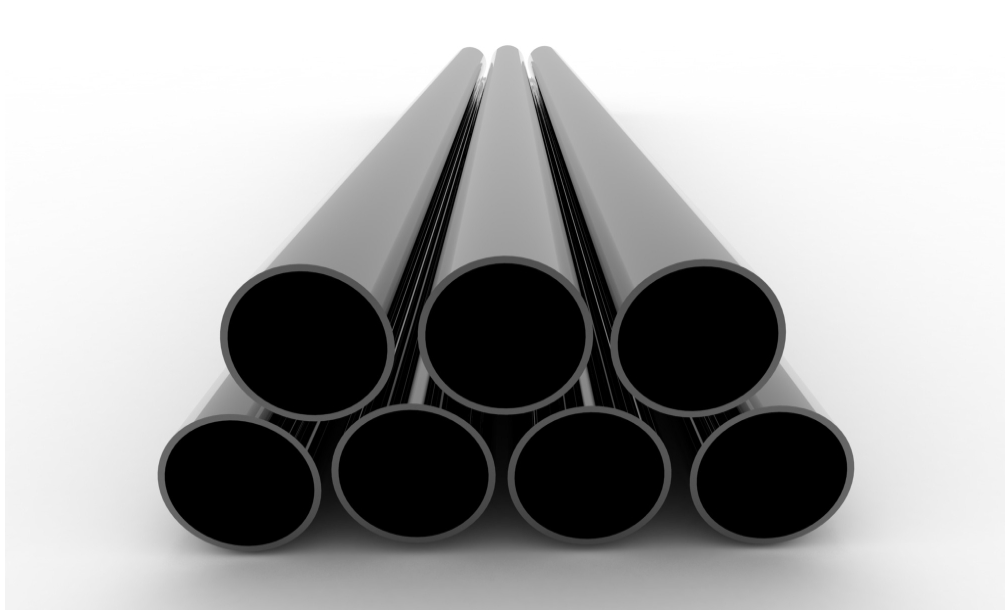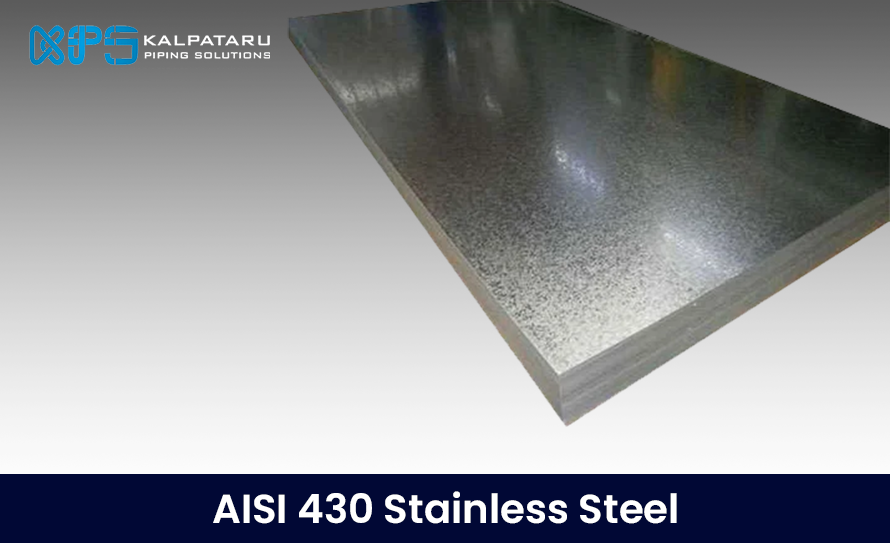What is Carbon Steel Pipes?
Carbon steel pipes are extensively used across various industries for their robustness and versatility. They serve critical roles in construction, structural applications, and the transmission of liquids such as water, oil, and gas. Commonly employed grades include API 5L Grade B, X42 to X70, ASTM A106 B, ASTM A53 B, ASTM A252 Grade 3, and ASTM A333 Grade 6.
Kalpataru Piping Solutions’ Offerings: Kalpataru Piping Solutions provides a wide range of carbon steel pipes tailored to meet diverse industrial needs, especially in the mining sector. Their offerings include:
- Seamless Steel Pipes: Known for their uniformity and high strength, suitable for various high-pressure applications.
- Welded Steel Pipes: Available in different types such as ERW (Electric Resistance Welded), EFW (Electric Fusion Welded), LSAW (Longitudinal Submerged Arc Welded), and SSAW (Spiral Submerged Arc Welded). These pipes offer robust performance in mining operations where durability and reliability are paramount.
Kalpataru Piping Solutions ensures that their carbon steel pipes conform to stringent industry standards, making them ideal for demanding environments and applications in the mining industry.
Carbon Steel Pipe Price
Carbon steel pipe price at 800 to 1600 USD per Metric Ton FOB Europe, depending on different grade and dimension.
Carbon Steel Pipe Standards and Grades (Seamless and Welded)
- ASTM A106 Grade B: Seamless pipe used for high-temperature service, typically in oil and gas refineries and plants. Known for its strength and corrosion resistance.
- ASTM A53 Grade A, B: Available in both seamless and welded forms (ERW). Used for general structural and pressure applications. Hot-dipped galvanized steel pipe versions are common for corrosion resistance.
- ASTM A179: Seamless cold-drawn low-carbon steel tubes used in heat exchangers and condensers due to their excellent heat transfer capabilities.
- ASTM A192: Seamless carbon steel boiler tubes designed for high-pressure applications, particularly in power generation and industrial boilers.
- ASTM A252: Used for welded and seamless steel pipe piles, typically used in foundation construction and marine structures.
- ASTM A333 Grade 1, 2, 3, 4, 5, 6: Seamless and welded steel pipe for low-temperature service where notch toughness is required, suitable for cryogenic applications.
- ASTM A134, ASTM A135: Electric resistance welded (ERW) steel pipes used in various industrial applications, including conveying gas, water, and oil.
- API 5L Pipe: Covers seamless and welded steel line pipe used for pipeline transportation systems in the petroleum and natural gas industries. Includes grades A, B, X42, X46, X52, X56, X60, X65, X70, X80.
- DIN 2440, DIN 2444: DIN standards for seamless and welded steel pipes suitable for screwing and hot galvanizing, used in various industrial applications.
- CSZ Z245: Covers seamless and ERW welded pipes excluding low-frequency electric welded pipe, primarily used in oil and gas pipeline systems.
- NBR 8261: Cold-drawn, cold-formed, welded steel pipes in circular cross-sections, square, or rectangular shapes, used for structural purposes.
- AWWA C-200: Standards for steel water pipes used in water transmission and distribution, ensuring durability and reliability in water supply systems.
These standards and grades cater to a wide range of applications across industries, providing options for specific performance requirements and environmental conditions. Additional materials and standards are available to meet specialized requirements as needed.
Carbon Steel Pipe for Mineral Slurry
Carbon steel pipes used for transporting mineral slurry in mining industries are crucial for conveying ores like iron and coal, as well as mining waste known as tailings over long distances. These pipelines, designed for carrying a mixture of solids suspended in water, are termed as slurry pipelines. The slurry, a mixture of water and various materials, is pumped through these pipes to its destination, where the water is separated from the solids through filtration.
Due to the abrasive nature of some slurry components, carbon steel pipes can be coated with layers like 3PE (three-layer polyethylene) or FBE (fusion bonded epoxy) to enhance corrosion resistance. This coating helps protect the pipes against deterioration caused by the corrosive elements present in the slurry.
Both seamless and welded carbon steel pipes are suitable for transporting slurry, providing flexibility in choosing materials and adhering to specific operational requirements. This ensures that pipelines in mining applications can withstand the harsh conditions they encounter, ensuring efficient and reliable transport of minerals and waste materials.
ASTM A106 pipe
ASTM A106 pipe refers to carbon steel pipes manufactured through hot rolled or cold drawn seamless processes. These pipes conform to ASTM A106 standard specifications, making them suitable for high-temperature service applications. They are commonly used to transport fluids such as water, oil, gas, and slurry, making them vital materials in the mining industry.
ASTM A53 pipe
On the other hand, ASTM A53 pipe covers both welded and seamless steel pipes, typically made from carbon black material and sometimes hot-dipped galvanized (zinc-coated). A53 pipes are considered basic piping materials with similar performance and pricing to ASTM A106B or API 5L B pipes. It’s common to find pipes marked with all three standards, known as “Three standards steel pipe”. Due to their versatility and reliability, A53 pipes are widely employed in mining and slurry services as well.
Coating types for carbon steel pipe as opposed corrosion environments
To enhance the resistance of carbon steel pipes in corrosive environments, Octal provides various coating systems designed to protect against corrosion and abrasion:
- 3PE Coating (3-Layer Polyethylene Coating): This system includes an inner epoxy/FBE layer, an adhesive layer, and an outer polyethylene layer. It provides robust corrosion resistance and is widely used in pipelines.
- FBE Coating (Fusion Bonded Epoxy Coating): Applied by heat, FBE forms a durable, chemically resistant layer that shields against corrosion and abrasion.
- Zinc Coating (Hot-Dipped Galvanized, Cold Electric Galvanized): Zinc coating involves immersing pipes in molten zinc, offering effective protection, especially in moist or outdoor settings.
- Solid, CRA, Clad, and Lined Pipes: Advanced options involve lining or cladding pipes with corrosion-resistant alloys or solid materials, enhancing resistance in harsh conditions.
These coatings are chosen based on environmental factors and application needs, ensuring prolonged pipe durability and reliability.
Our supply range for black carbon steel pipes
- Outer Diameter: Ranging from 1/8” to 60” (10.3mm to 1500mm).
- Thickness: Available in SCH10 to SCH160 (2.11mm to 50.01mm, 0.083” to 2”).
- Length: Offered in SRL (Single Random Length), DRL (Double Random Length), 20FT, 40FT, and customized lengths from 5 meters to 18 meters.
- Ends Processing: Options include Plain Ends, Beveled Ends, and Threaded Ends to facilitate different installation requirements.
- Outside Coating: Provides protection against corrosion and abrasion with options such as Black Painting, Varnished, FBE (Fusion Bonded Epoxy), 3pp (Three Layer Polypropylene), and 3PE/3LPE (Three Layer Polyethylene) coatings.
These specifications ensure our carbon steel pipes are suitable for a wide range of applications, offering durability and reliability in diverse environmental conditions.
FAQs
What is a carbon steel pipe?
A carbon steel pipe is a robust conduit made from a steel alloy containing primarily iron and carbon. Renowned for its strength and resilience under stress, carbon steel piping finds extensive application across heavy-duty industries such as infrastructure development, shipbuilding, distilleries, and chemical fertilizer equipment.
What are the disadvantages of carbon steel pipe?
The disadvantages of carbon steel pipe include:
- Poor Thermal Hardness: At temperatures above 200 degrees Celsius, carbon steel’s hardness and wear resistance decrease significantly.
Low Hardenability: Carbon steel has limited ability to be hardened, which can restrict its use in applications requiring high strength through heat treatment.
Is carbon steel rust proof?
Carbon steel is susceptible to rusting when exposed to moisture and oxygen, which makes it unsuitable for applications where corrosion resistance is critical. While carbon steel is valued for its affordability and strength, it requires proper maintenance and protective coatings to prevent rust and maintain its performance over time.




